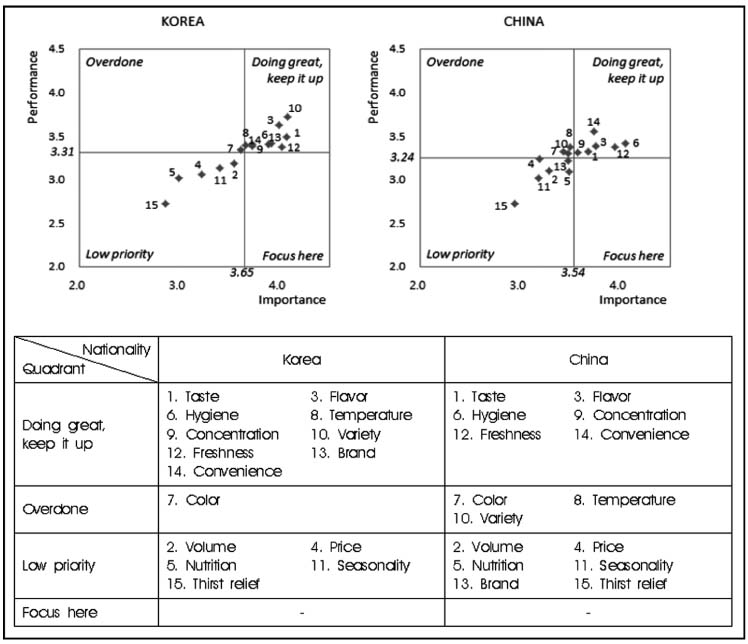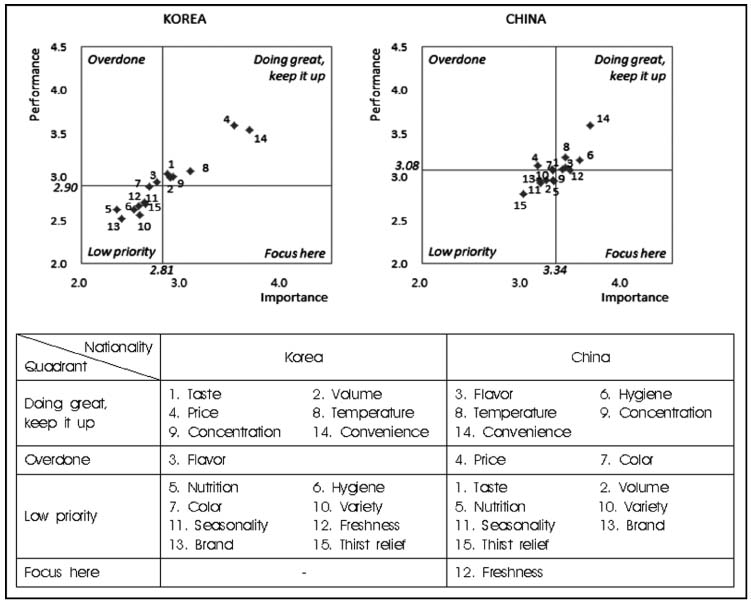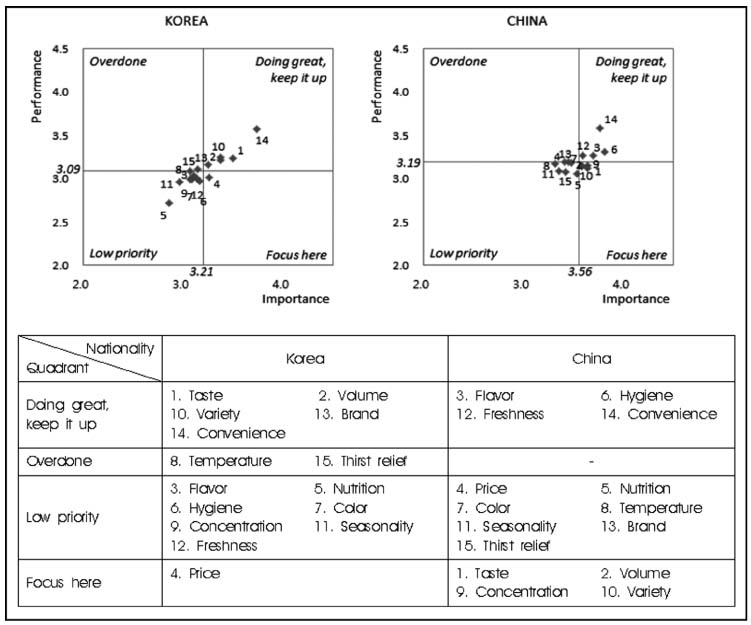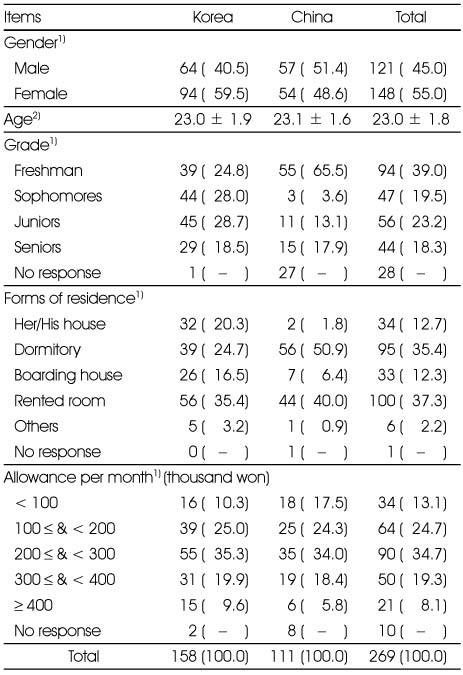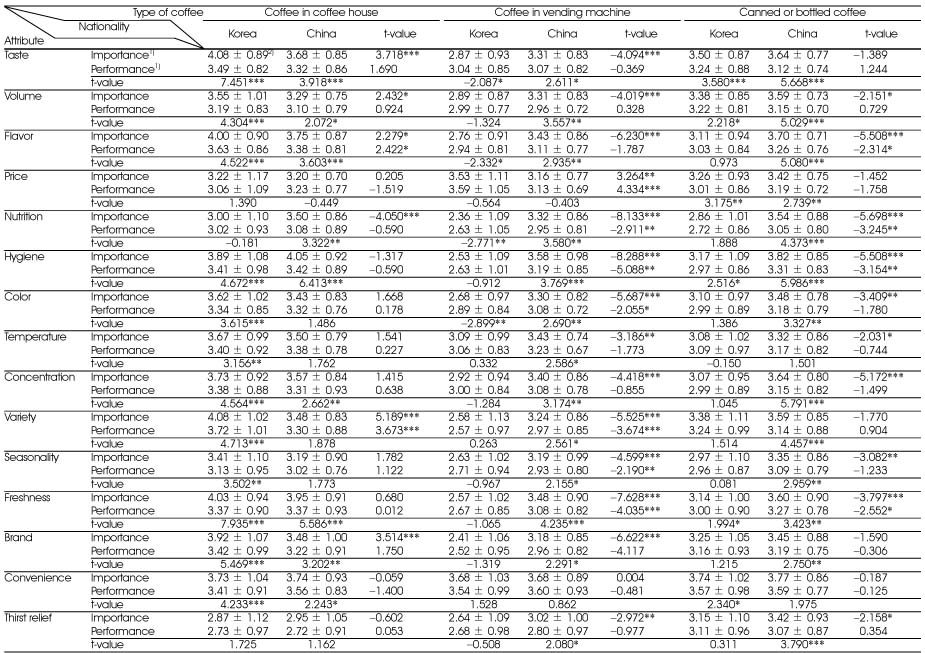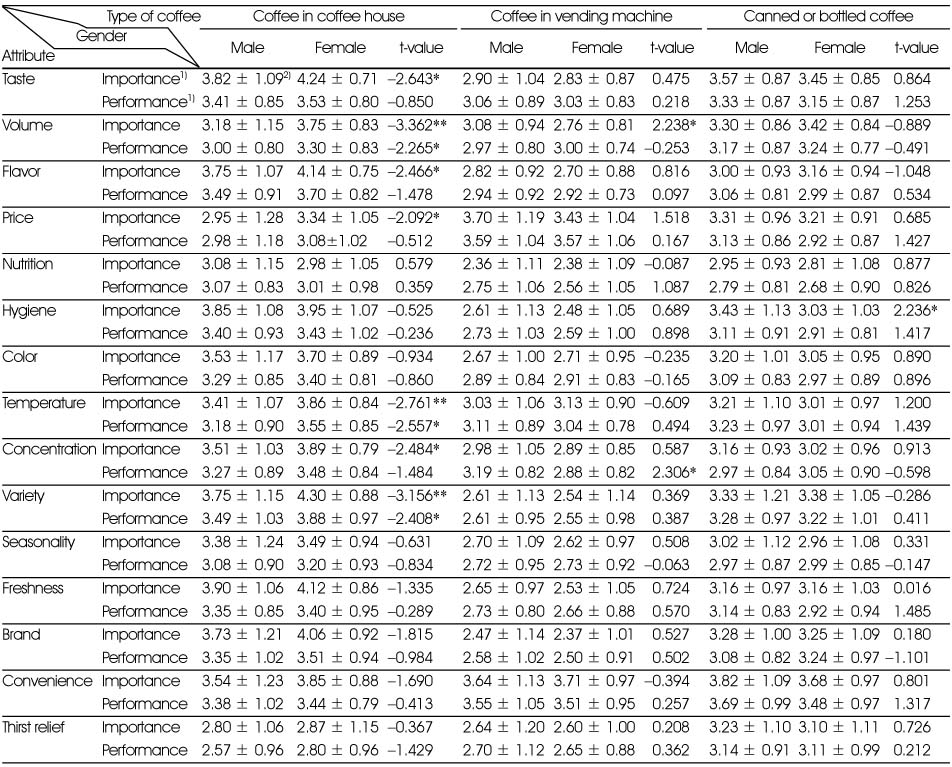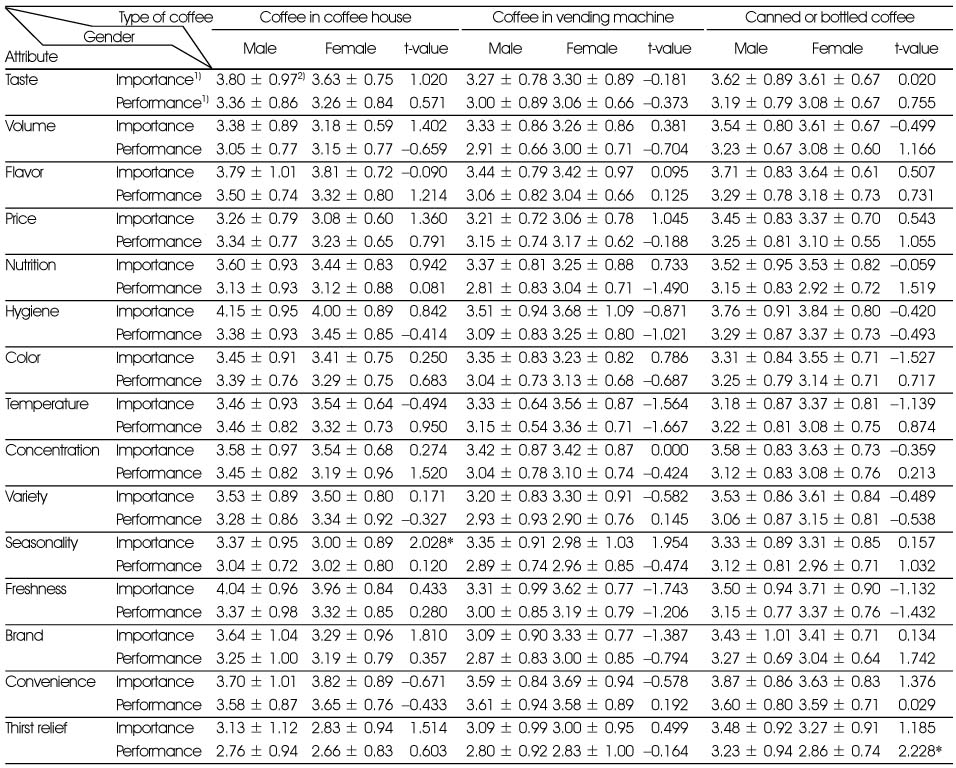References
1. Byun GI, Lee SY, Cho WJ. Study on the importance and customer satisfaction of coffee-shop type according to the choice attributes by university students : Focused on Daegu. J East Asian Soc Diet Life 2009. 19(4)503–514.
2. Choi JO. The current analysis of consumer behaviors using the coffee vending machine 2000. Andong University; 39. MS thesis.
3. Choi YS, Kim YT, Jhee OH. A study on university students' coffee shop use in the Seoul area. Korean J Culinary Res 2009. 15(1)287–295.
4. Green CG. Using customer survey data to develop marketing strategies in college/university food services. Journal of College & University Foodservice 1992. 1(1)39–51.
5. Ha KH. Survey of Korean food acknowledgement and preference by Chinese students in Daejeon. . Korean J Food Nutr 2010. 23(2)186–195.
6. Ha TS, Park MH, Choi YS, Sho SH. A study on beverage consumption pattern associated with food and nutrient intakes of college students. J Korean Diet Assoc 1999. 5(1)21–28.
7. Han ES, Rho SN. An analysis of consumption and preferences of the Korean traditional drinks by women indifferent age groups. J East Asian Soc Diet Life 2004. 14(5)397–397.
8. Jiang L. Comparison of salty taste assessment and eating behaviors among university students in Daegu, South Korea and in Shenyang, China 2010. Kyungpook National University; 65–68.
MS thesis.
9. Jung HY, Jeon ER. Preference for Korean food and satisfaction of dormitory foodservice by Chinese students studying at Mokpo National University. J Korean Soc Food Sci Nutr 2011. 40(2)283–289.
10. Jung YW. A study on the factors of customer satisfaction and customer loyalty in coffee houses. Korean J Culinary Res 2006a. 12(4)1–17.
11. Jung YW. A study on the positioning strategy of coffee house. Korean J Hosp Adm 2006b. 15(1)269–289.
12. Kang SY. Coffee: Trends in 2006 and forecasting 2007. Food Industry 2007. 195(1)37–45.
13. Khoe KI, Sul WS. A study on the entering strategies of Korean traditional food in Chinese market. Korean J Food Mark Econ 2008. 25(2)125–152.
14. Kim HA. Importance-performance analysis of service quality of in campus specialty coffee shop. J Korean Soc Food Sci Nutr 2008. 37(8)1069–1078.
15. Kim HB, Lee JW, Ro YJ. Impacts of choice attributes on customer loyalty in the coffee-shop restaurant. J Foodserv Manage 2007. 10(4)237–252.
16. Kim HJ. The survey of beverage preference and sales trends 2004. Sookmyung Women's University; 8–9.
MS thesis.
17. Kim KH, Kim KM. A study on Chinese consumers' Korean food consumption behavior based on food-related lifestyle. Korean J Food Mark Econ 2010. 27(1)41–62.
18. Kim SS, Kim BK, Park JO. Identification of selection attributions and assessment of brand equity of take-out coffee shops using conjoint analysis. Journal of Foodservice Management 2006. 9(4)49–69.
19. Kim WS, Oh KN, Lee YH, Cho KO. Marketing strategy for service quality improvement of specialty Starbucks coffeeshop: A case study. Journal of Foodservice Management 2002. 5(1)3–22.
20. Kim YO. A study on the choice attributes and customer satisfaction of a take-out coffee shop. Korean J Culinary Res 2003. 9(3)141–154.
21. Ko JY, Seo HJ. A study on the selection attribute of coffee consumer's. Journal of Hotel and Resort 2009. 8(2)23–41.
22. Korea Centers for Disease Control and Prevention. The forth Korea National Health and Nutrition Examination Survey (KNHANES IV) 2008. Seoul: 127. 143.
24. Lee YN, Kim JY. Differences in purchase behavior and choice attributes according to characteristics of specialty coffee shop customers. J East Asian Soc Diet Life 2009. 19(2)265–277.
25. Martilla JA, James JC. Importance-performance analysis. The Journal of Marketing 1977. 41(1)77–79.
26. Park KH, Yoon JH. Coffee SERV: Multiple-item scale for measuring service quality of specialty coffee shop. J Foodserv Manage 2006. 10(2)249–265.
27. Seo GH, Shin MJ. Importance and satisfaction with the service of Korean restaurants for Japanese and Chinese students in Korea. J East Asian Soc Diet Life 2006. 16(6)753–762.
28. Shin SY, Chung LN. Analysis of customer perception for quality attributes according to consumers' coffee consumption types. Korean J Food Cult 2007a. 22(6)748–756.
29. Shin SY, Chung LN. The preference and frequency of beverages related to health factor in university students. Korean J Food Cult 2007b. 22(4)420–433.
30. Sohn KH, Lee MJ, Min SH, Lee HJ. A study on the factors affecting the consumption of coffee and tea among female in Seoul. Korean J Food Cult 2000. 15(5)398–412.
